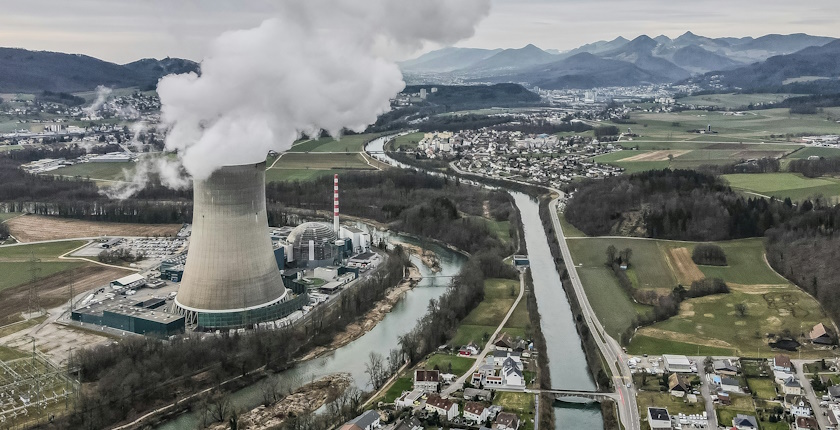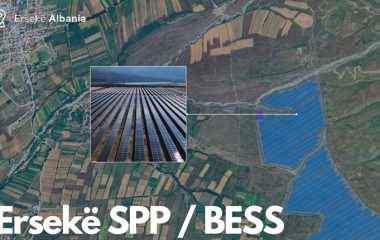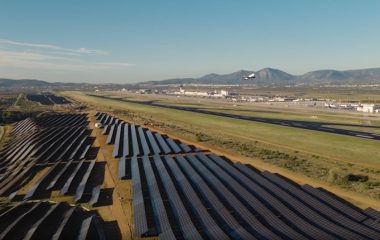
Photo: Patrick Federi on Unsplash
France is spearheading a group of governments that have a symbolic majority within the European Union for their initiative to enhance support for the nuclear energy sector. On the other hand, the so-called Friends of Renewables bloc has consolidated under the leadership of Germany and Austria.
The EU’s renewable energy push was watered down in 2022 with a political compromise. Germany was determined to close its last nuclear power plants and decided to lean on fossil gas, while France wasn’t giving up on Europe’s biggest nuclear power fleet. The latter insisted on the technology’s significance for energy security and decarbonization potential.
Both gas and nuclear energy got green tags in the EU’s so-called climate taxonomy and subsequent legislation. However, strings were attached to both and not defined in detail. The nuclear segment is facing much stricter rules while gas infrastructure projects can be subsidized only if they can switch to hydrogen.
Formally they are seen as transitional solutions in decarbonization. Nevertheless, companies in the nuclear energy sector require guarantees, pointing out that such investments are for the long term.
Gas as usual if hydrogen remains uncompetitive
At the same time, the perspective for hydrogen is uncertain. Gray hydrogen, produced directly from fossil gas, comes with strong greenhouse gas emissions. They can be captured, giving it the blue label. But such technology is still expensive and unreliable, though the EU is handing out billions of euros in incentives.
The two opposing camps are bickering even over pink hydrogen
Finally, green hydrogen, obtained through the electrolysis of water in a process powered by renewables, is still far from competitive against the gray version. One overlapping solution is pink hydrogen, where electrolyzers are fed by nuclear power.
Still, France and its pro-nuclear allies blocked the revision of the Renewable Energy Directive, RED3, for several months last year before the issue was resolved. Ahead of this week’s meeting of EU energy ministers, the camp called for more support for nuclear energy again. Separately, the so-called Friends of Renewables used the opportunity to promote the case for prioritizing renewables and accompanying systems.
Differing views on 2040 decarbonization path
Both sides highlighted the European Commission’s recent impact assessment on possible pathways toward making the European Union climate neutral by 2050. It recommended measures to achieve a cut in annual net emissions of 90% by 2040 from the 1990 level. The legal framework for the period after 2030 is yet to be negotiated.
The EU Nuclear Alliance, spearheaded by France, said the commission’s communication on the 2040 climate objective “set the tone for a more technology-neutral approach in EU policies.” It would effectively mean more room for nuclear energy and other supposedly transitional technologies.
Both the Nuclear Alliance and Friends of Renewables want clarity with regard to investing
The group commended the European Commission’s launch of the Industrial Alliance on Small Modular Reactors (SMR Industrial Alliance), aimed at accelerating the deployment of small and advanced modular reactors (AMRs) and a domestic supply chain including a skilled workforce.
“This momentum must now be converted into a comprehensive and enabling European framework for nuclear development, exploring essential policies dimensions including financing… Furthermore, we call for an open discussion about the broadening of the European Hydrogen Bank to low-carbon hydrogen production from electrolysis, in line with relevant delegated acts, in order to decarbonize the European economy,” the pro-nuclear bloc said.
Several countries in both camps or in neither one
The declaration was signed by only 12 countries: Bulgaria, Croatia, Czech Republic, Finland, France, Hungary, the Netherlands, Poland, Romania, Slovakia, Slovenia and Sweden. On the other hand, Belgium holds the EU presidency, so it is currently neutral, but it plans to extend the operating life of two nuclear reactors.
There is also an initiative in the country to install an SMR. The government in Italy, which participated just as an observer, is considering the technology as well.
The progress in SMR technology seems to have tipped the majority of EU governments toward a pro-nuclear energy stance, despite a substantial dependence on Russian technology and fuel. The United Kingdom is cooperating with the Nuclear Alliance.
Estonia earlier participated in its gatherings, as it is analyzing the possibility of approving an SMR as well. But this time it sided with the Friends of Renewables bloc, together with Italy. The Netherlands signed both statements. Cyprus and Lithuania abstained from both.
Changes require clear investment framework
The remaining signatories in the group of 13 EU governments are Austria, Denmark, Germany, Greece, Spain, Ireland, Luxembourg, Latvia, Malta and Portugal.
In the most ambitious scenario leading to 90% greenhouse gas emission reduction by 2040, renewables will have to account for up to three quarters of the EU’s gross final energy consumption and 90% of electricity consumption, Friends of Renewables pointed out.
The green energy bloc claims the EU would require over 2 TW in total renewables capacity by 2040
“This translates into more than 2,000 GW installed generation capacity of renewable energies across the union by 2040 and a significant increase of flexibility technologies, such as storage, dispatchable generation and flexible demand. These changes require a clear investment framework to attract and coordinate private and public investments. Moreover, there is also a need to unlock the significant potential of renewable energy sources for the decarbonisation of Europe’s largest energy-consuming sectors, including heating and cooling, while also unleashing the potential of offshore renewable energies,” the group wrote.
Friends of Renewables hint at technology neutrality in decarbonizing energy
There is no mention of nuclear energy in the document, but it does apparently hint at the aforementioned technology-neutral approach. “The next cycle of investment needs to build the pathway towards the decarbonisation of the electricity and energy system. Given the short period until 2040, and without prejudice to ongoing negotiations on European financial frameworks, funding should focus on cost-efficient technologies where common targets exists,” the declaration reads.
Twelve member states host nuclear power plants: Belgium, Bulgaria, Czechia, Finland, France, Hungary, Netherlands, Romania, Slovakia, Slovenia, Spain and Sweden. Croatia has a 50% share in Slovenia’s only nuclear facility – Krško, located near their border. Germany shut down its last reactors a year ago and Spain intends to do the same by 2035.

















Be the first one to comment on this article.